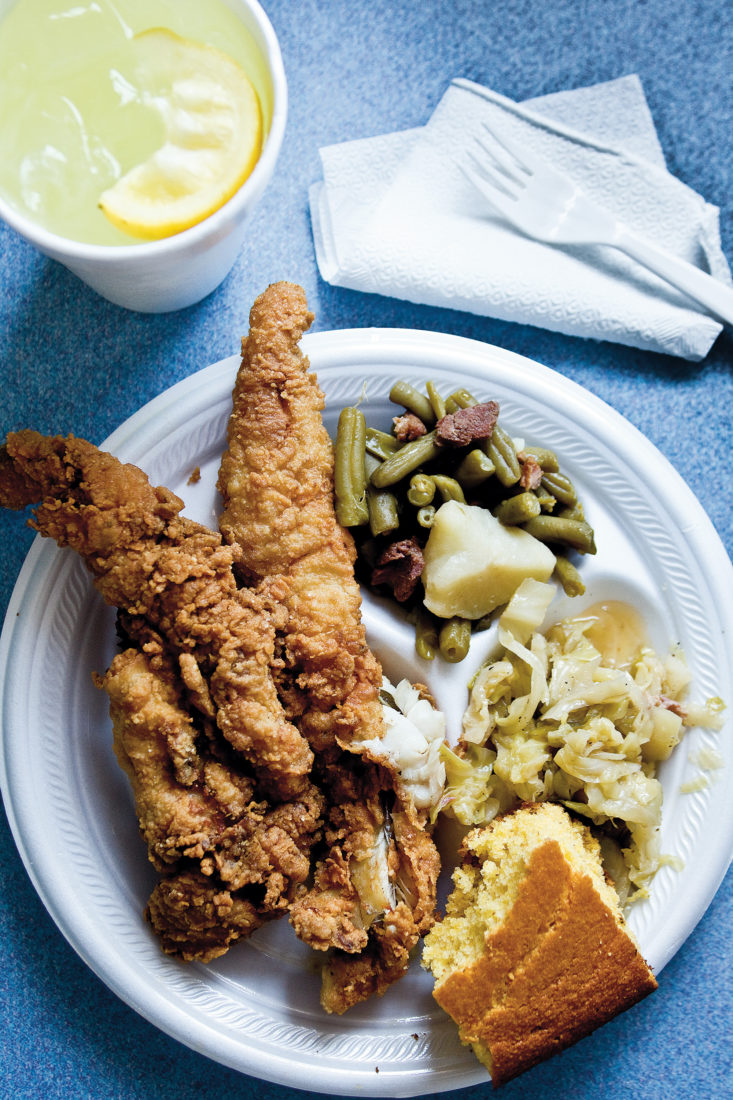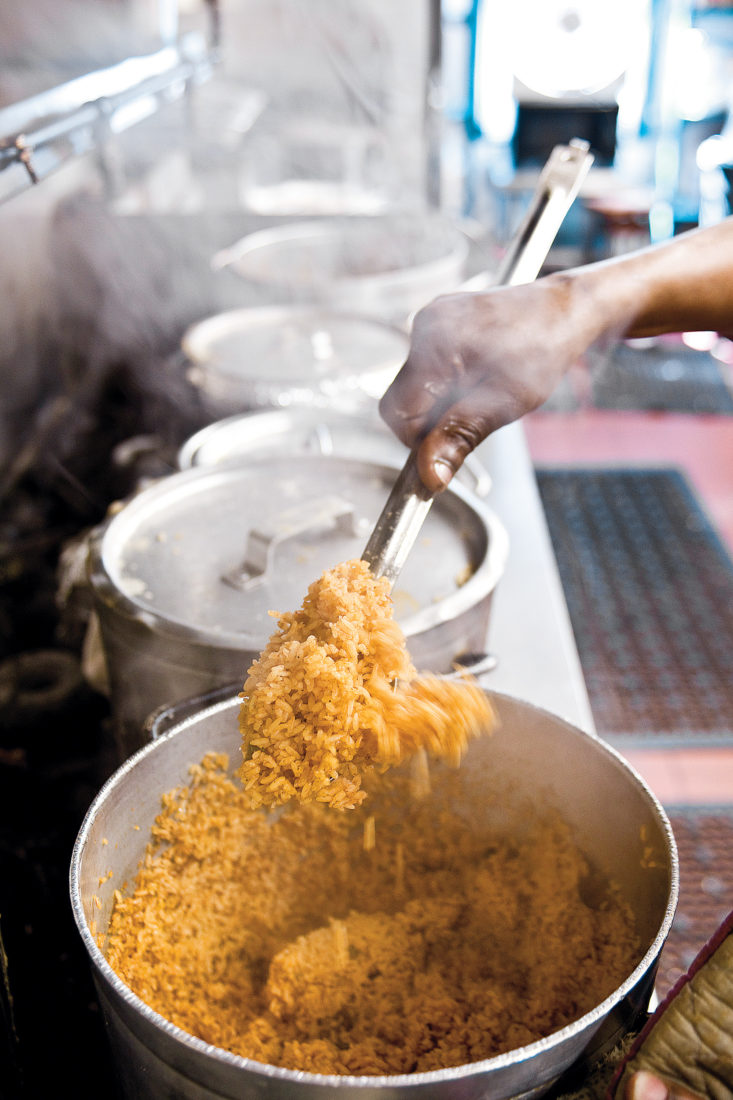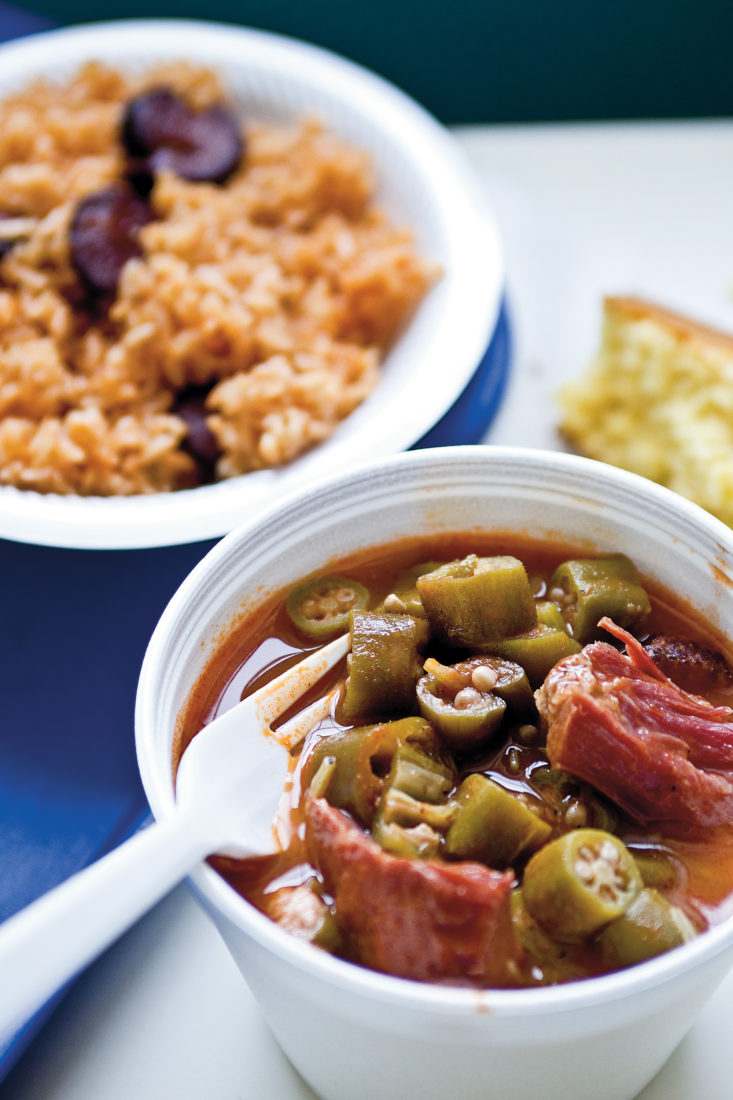Crane your neck, twist it hard, and you can almost see Charleston Harbor from the front stoop at Bertha’s Kitchen. The teal-colored two-story café, trimmed in purple, is set in the working-class Union Heights neighborhood in North Charleston, on the industrial northern reaches of Meeting Street Road. Union Heights, in what locals call the Neck, is not the Charleston of tourist brochures. No surreys roll down the streets. No rainbow-hued eighteenth-century houses line the waterfront. Stevedores, not swells, live in these shotguns and bungalows.

Photo: Terry Manier
Cooking Right
Fried whiting.
The café has been in business since 1979. Sadly, Albertha Grant, the founder, passed away in 2007, at the age of seventy. But her presence is still felt each time a cook hefts a stewpot to the stove and tosses in a seasoning hunk of side meat. (Look to your right when you walk in the door; that’s Albertha, rendered in a watercolor-on-glass portrait, surrounded by her daughters, Sharon Coakley, Linda Pinckney, and Julia Grant, the inheritors of her legacy and her business.)
Bertha’s is a fry house of the first order. They don’t source money fish like snapper and grouper here. At these prices—about eight bucks for a generous meat-and-three—they can’t afford to. Whiting is the species of choice. Cooked to order, shingle-thin fillets emerge from the oil tasting as sweet as cream.
Photo: Terry Manier
Linda Pinckney
1 of 3
Photo: Terry Manier
Julia Grant
2 of 3
Photo: Terry Manier
Sharon Coakley
3 of 3
You can get a great pork chop, too. Gnarled in shape and vaguely ferrous in color, these bone-in monsters are ferried straight from the fry bank. They arrive so hot that, at a recent lunch, my rib bone burned a hole through the foam plate.
But vegetables and sides are Bertha’s forte. The noonday steam table is a reliquary of Lowcountry standards, including okra soup, pebbled with seeds; stewed lima beans, threaded with ham; and red rice, pocked with skillet-blackened coins of sausage. A good eater well versed in Southern culinary culture might recognize linkages with Louisiana, where gumbo, white beans, and jambalaya are, in that order, analogous dishes. Both traditions owe debts to cooks who trace their ancestry back to Africa. In Charleston, Lowcountry cookery has long been interpreted by women who work in the Gullah idiom, while in New Orleans, Creoles of Color still stand tall by the stoves in restaurants both old guard and vanguard.

Photo: Terry Manier
Red rice for all.
The ladies who bang the pots in Bertha’s open kitchen distill generations of local culinary knowledge into each plate they serve. Robert Stehling of Hominy Grill was the first Charleston chef to tell me about Bertha’s. He was not the last. Thinking chefs, especially those who work at the white-tablecloth end of the spectrum, pay deference to the vernacular cooking they interpret. And they pay their respects at lunch, when their own restaurants are often closed. One afternoon, I sat at a back booth in Bertha’s, beneath a TV set blaring a rerun of the 1970s-era series S.W.A.T., and watched as Ken Vedrinski, the chef at Trattoria Lucca in Charleston, came piling in with a bunch of younger chefs in skinny black jeans. They looked doe-eyed. They looked happily lost. They looked hungry.
Vedrinksi’s crew ate stewed chicken necks and gizzards, served over red rice. They ate pork chops, as rivulets of juice traced down their chins. They slurped bowl after bowl of okra soup. They fought over the crust that topped a serving of macaroni and cheese, their appetites testament that Bertha’s is a place of pilgrimage for curious eaters in search of the honest roots of modern Lowcountry foodways.











